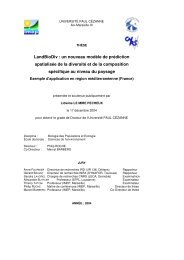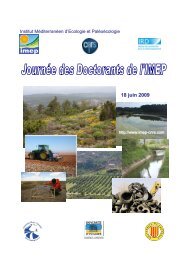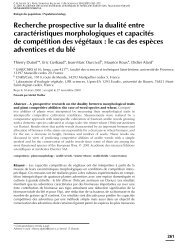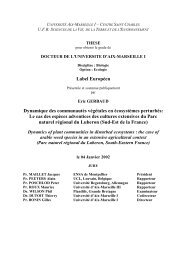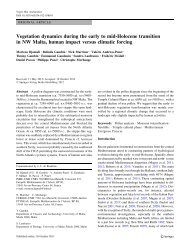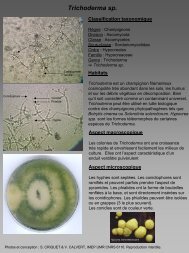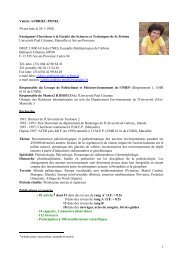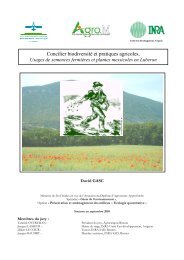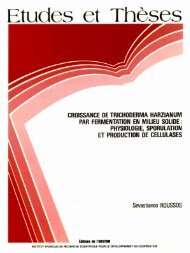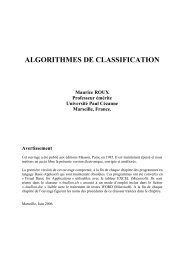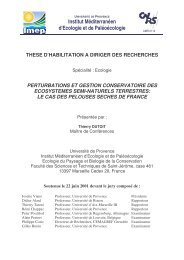UNIVERSITÉ PAUL CÉZANNE, AIX MARSEILLE III - IMEP
UNIVERSITÉ PAUL CÉZANNE, AIX MARSEILLE III - IMEP
UNIVERSITÉ PAUL CÉZANNE, AIX MARSEILLE III - IMEP
You also want an ePaper? Increase the reach of your titles
YUMPU automatically turns print PDFs into web optimized ePapers that Google loves.
Résultats et discussion. Chapitre 3: Evaluation des facteurs de croissance<br />
substrate on polyphenol removal. These results are in accordance with previous findings<br />
demonstrating that high content of N had a negative effect of the degradation of procyanidins<br />
by Aspergillus fumigatus (Contreras-Dominguez, 2006). Our results, demonstrating decrease<br />
of pH in the substrate without supplement after the incubation period, are comparable to those<br />
obtained on oak-wood sawdust substrates (Philippoussis et al., 2003), and they confirm<br />
previous observations stating that a low pH value of the substrate is probably a prerequisite<br />
for primordia formation (Kalberer 1995).<br />
Spawn inoculation size was found an important factor that affects the mycelial growth.<br />
Compared to the straw, spawn is a relatively expensive item. Using the lowest inoculation<br />
size possible without sacrificing the mushroom yield would give the best economics. The<br />
spawn size is defined as the weight ratio of spawn to substrate on a fresh weight basis. The<br />
optimum spawn size depends on the type of substrate, mushroom species, spawn quality, and<br />
the cultivation conditions. Among the two spawn size (10 and 20%) tested, the 10% spawn<br />
size resulted in significantly lower mycelial biomass than the other size. The mycelial<br />
biomass at the 10% size was 37.5% lower than at the 20% size for the substrate without<br />
supplement. The mycelial growth at the 10% size showed contamination by green and black<br />
moulds during cultivation of the L.edodes Le119 strain. Therefore, based on these results, it<br />
would be recommended that at least 10% spawn level be used to achieve a colonization of the<br />
substrate by L. edodes without any mould contamination.<br />
5. Conclusion<br />
The growth of L. edodes Le119 on SOS using different mixture allowed us to<br />
determine the optimal formulation which was OTL (20%) + OC (30%) + OMW (50%)<br />
allowing mycelial biomass production of 16,24 mg.g -1 of substrate dry weight. The nutriments<br />
added to the substrate which negative effect and spawn size which positive effect were the<br />
main parameter that affected the growth of L. edodes Le119 on optimal SOS. Thus, the<br />
optimal condition of growth of L. edodes Le119 on SOS are the following; SOS composition<br />
(20% of OTL, 30% of OC and 50% of OMW), initial pH of 5, temperature of incubation<br />
25°C, aeration flow 20 mL.min -1 , inoculum age of 10 days, inoculum size 10%, 70% of<br />
particle size between 2 and 0.8 mm mixed with 30% of particle size less than 0.8 mm and<br />
with addition of nutrients.<br />
105



